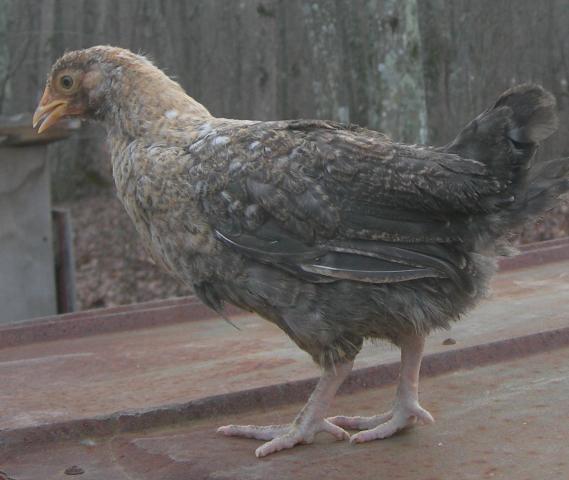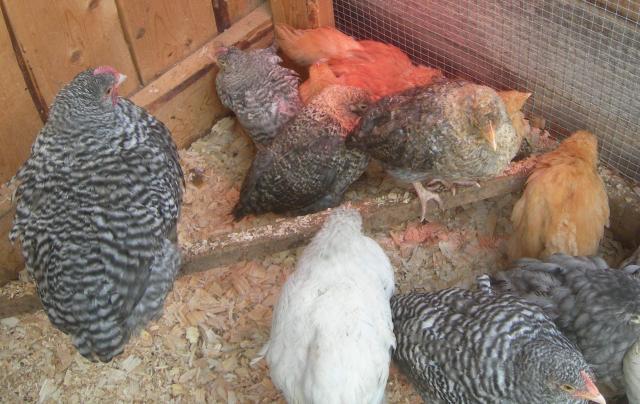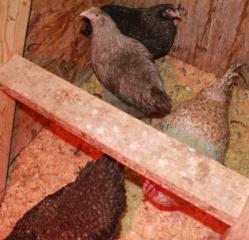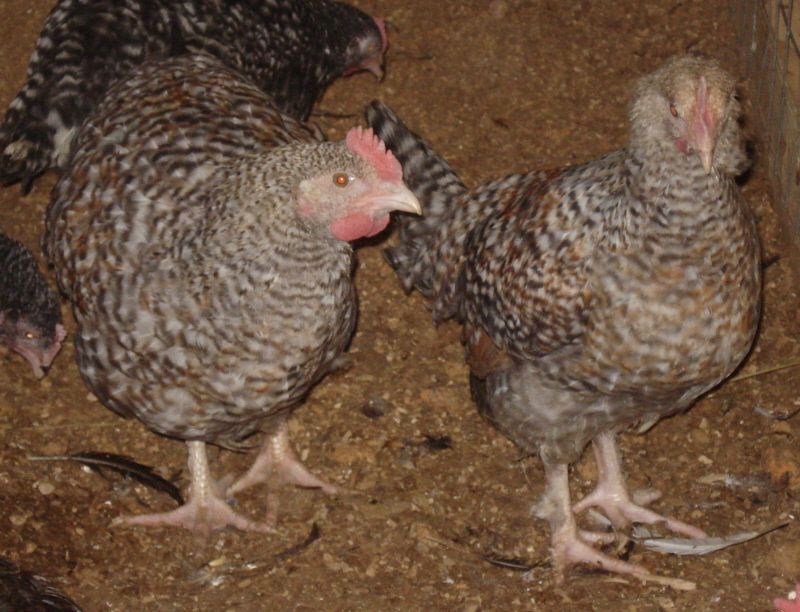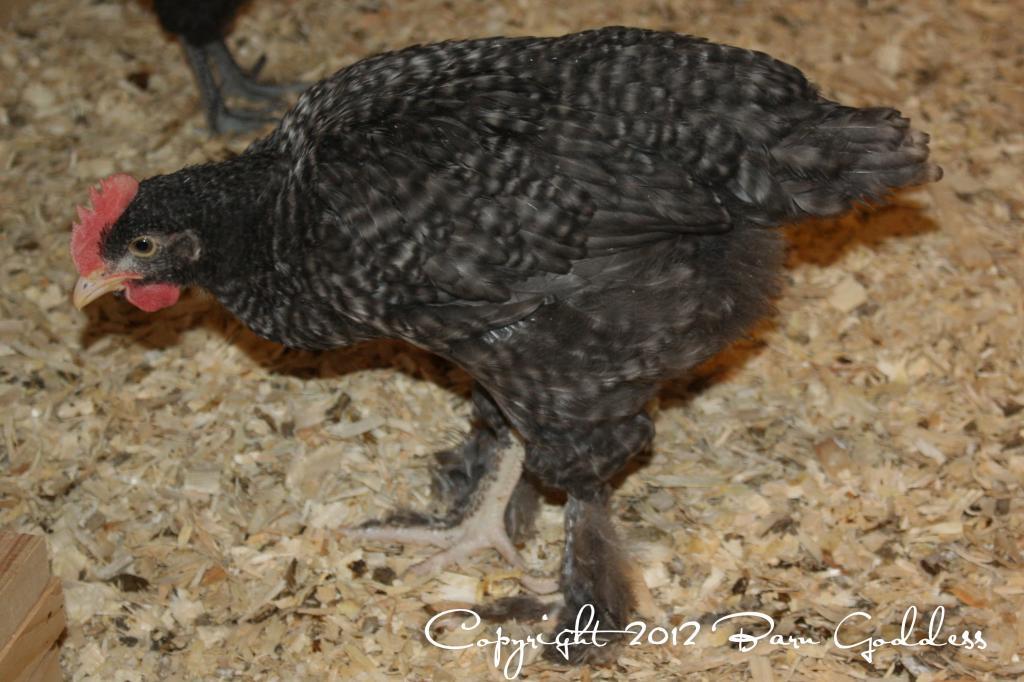Quote:
She is wild colored & 100% marans!!
===================
Ok, I will weigh in here. I worked with Golden Salmon Marans for a couple of years before becoming frustrated and moving to Sussex. There's 3 reasons for the penciling in this brown bird. Either it is e+/eb (eb+ equals no salmon breast.../e+/eb= lighter salmon breast than usual) or , or its in juvenile feathering and going thru a "stage", or you have a problem with the depth of color in the sires hackle. Improper selection of color in the sire's hackle can cause penciling in the pullets.
Dan Honour's uncle's uncle was a gentleman named W. H. Card. He was a veteran poultryman and APA judge. He created the White Laced Red Cornish. Judge Card was concerned that poultry people didn't understand the
Laws which governed the breeding of poultry. He felt folk were being give advice, but not the true Laws. Judge Card wrote a great little book on the subject of breeding Laws which can be read online at archive. org.
http://www.archive.org/details/cu31924003158312 The whole book is very interesting There is a chapter on breeding the penciled and stippled breeds. I highly reccomend the Penciled and Stippled chapter. It has breeding counsel on how to select for proper hackle in the male.
Also, it's interesting to read the Brown Leghorn lit on breeding. The Dark Brown leghorn is eb based and the female is penciled. The Light Brown Leghorn is e+ based and the hens are stippled (like the Golden Salmon). In the early days, the breed was double-mated so care needs to be taken to understand the context of the early lit. The early writers tended to swap back and forth between Light and Dark when counseling on mating stratagies. Circa 1930, they discovered how to single-mate the colors and now both Light and Dark Leghorns can be single-mated. Their lit is rife with advice on how the color of the sire's hackle affects the tone of the daughter's plumage. Fascinating. Just remember Dark advice is for Dark and Light advice is for Light since the 2 colors are on different
e alleles.
Now if you're going after Golden Salmon, they are not Gold Duckwing or Golden Duckwing. Both the Golden and Gold Duckwing carry the silver gene. Neither is Golden Salmon a Red Duckwing, which carries the Mahogany gene. There are no hypostatic genes in Golden Salmon. These names are wrong, making it hard to find info on breeding the Golden Salmon color. (The French are the only ones who call this color "Golden Salmon"). While the Silver Salmon is indeed a Silver Duckwing, the Golden Salmon is not a Gold Duckwing. It is a duckwing and does carry the Gold Gene, however, it's proper name is Black-Breasted Red with the Salmon-Breasted, Stippled Hen.....or Golden Salmon. If we forget we are breeding for a stippled hen, we start to see all the weird colors now populating the Golden Salmon world. The stippled hen is key, even more than the Salmon breast, tho they march-hand-in-genetic-hand.
This bird is young and in juvenile feathering so hard to say how it will feather out in adult plumage. I am so pleased to see a lack of Autosomal Red or Mahogany in this bird. That's a good stride forward. Another side note, I was counseled by some experienced breeders ( one of which worked extensively with e+ fowl ) that it was unwise to plan Brian Reeder's Autosomal Phelaomim(I can't spell that word, never could) into a breeding program. I did anyway and found their advice was true. If you are wanting to breed Golden Salmon, ignore Brian Reeder's work on the Ap gene. It doesn't apply to Golden Salmon and has nothing to do with the Salmon breast. I found that out the hard way. Personally? I think the Salmon breast is a natural consequence of e+ meeting s-. In other words, it just
happens. Considering other forms of Red into the Golden Salmon equation to try and explain the Salmon breast, makes it too likely to incorporate either unwanted Mahogany or unwanted Autosomal Red into the bird's plumage, while thinking one is
seeing Ap instead. Frankly, I think this is behind the Red Duckwings we see touted as Golden Salmon. From what I have seen of the dark French birds last year(2010), I think even they are confused on this point.
Number one credo with Golden Salmon. "There are no hypostatic genes in Golden Salmon". Every other color than e+, s+ or s- corrupts Golden Salmon. There is no "enhancing" this color with other genes. No color balancing like in Black Copper. Either it is correct or it is corrupt.
Best Regards,
Karen Tewart
Waterford Sussex and Marans
Ligonier, PA



